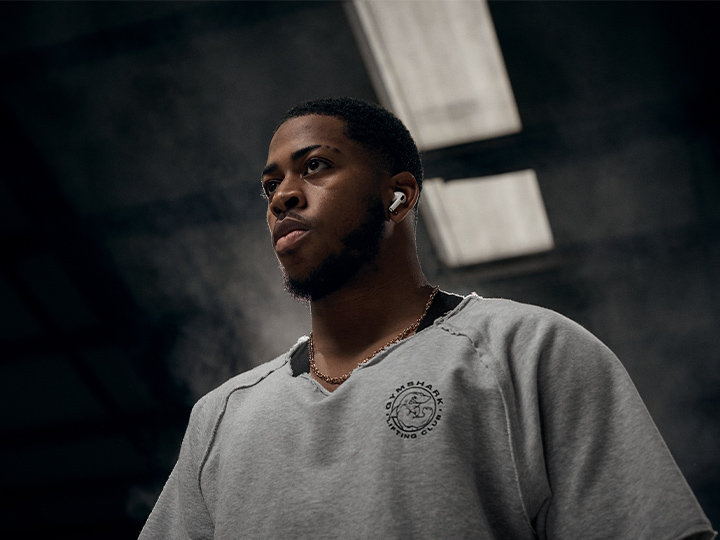When building bigger hamstrings, there’s a common debate about the best hamstring curl machine and which variation provides the biggest bang for your buck.
But one thing is for sure, if you want bigger legs, training your hamstrings is key. Made up of three muscles, the hamstrings run from your hip to just below the knee – and allow the knee the bend, alongside extending and rotating the hip joint.
We’ll strip down the two most popular hamstring curl exercises, the prone leg curl and seated leg curl, to see which, if any, is superior when it comes to building bigger hamstrings.
Before we continue, it’s worth mentioning that isolation exercises are no substitute for the fundamentals – and, therefore, should be used alongside compound exercises for a muscular and able physique. Here's a list of the best hamstring exercises.
The Similarities:
There’s no denying it; both the prone leg curl and seated leg curl have many similarities, and that’s because they are both isolation exercises designed to target the hamstrings.
Similarities between the prone leg curl and seated leg curl include:
Knee flexion occurs, created by engaging the hamstring
Resistance can be easily adjusted
Hamstrings are isolated as the target muscle group
Now we understand the prone leg curl and seated leg curl have a great deal in common, it’s time to find out if one is better than the other, or if you just use whichever machine isn’t currently being occupied by a social media scroller.
Prone Leg Curl vs Seated Leg Curl: Which Is Better?
We get it, everyone has their preferences. And you’re probably reading this with a clear picture in your head of which of these two hamstring exercises you’d favor, but maybe the science will sway your decision.
A recent study looked at twenty healthy adults, who completed seated leg curls with one leg, and prone leg curls with the other. The individuals performed 5 sets of 10 reps, 2 sessions per week for 12 weeks.
The findings? Pretty significant…
The study found that ‘training-induced increases in muscle volume were greater in Seated-Leg versus Prone-Leg for the whole hamstrings (+14% vs +9%)’.
So, should the prone leg curl be thrown in the bin? Not quite, it still has its place and although it wasn’t as effective in this study as the seated leg curl, it was still shown to increase muscle volume in participants.
One thing to consider however, is the range of motion in which you execute these two hamstring curl exercises. Studies have hypothesized that the main factor in the increased muscle growth when using the seated leg curl machine is due to the hamstring being trained in a lengthened position, when compared to the prone leg curl.
Therefore, half-reps, uncontrolled eccentric movements, and improper machine set-up could all have a negative impact on your results when training hamstrings.
How To Do The Seated Leg Curl
Want to give the seated leg curl a try? Here's how to do it:
Set up the machine with your knees in line with where the machine rotates, and adjust the pad to sit comfortably above the back of your ankle.
Adjust the weight to add resistance.
Keep the back for your thighs, glutes, and back in contact with the pads, and grip the handles lightly.
Slowly flex your knees, using your hamstrings to pull your heels underneath the seat for a full contraction.
Control the eccentric motion back to the top, until your legs are straight, before beginning the next rep.
TIP: It's easy to swing with this exercise, so be sure to control the movement for the entire rep, pausing at the top and bottom.
How To Do The Prone Leg Curl
As with the seated leg curl, ensuring the machine is set up correctly for you is key to ensuring the exercise can be completed correctly, and safely.
Adjust the leg bad position to just below the calf, or where feels most comfortable above the back of your ankle.
Adjust the weight to add a little resistance.
Lie on the pad, holding the handles and keeping your hips, thighs and chest in contact at all times.
Slowly curl your hamstrings, as if you are trying to touch your glutes with your heels.
At the top of the rep, begin a slow eccentric motion back down the start, and repeat.
TIP: Lifting your hips or chest off the pad is a sign the weight is too heavy, reduce the weight and focus on your form before working back up to a heavier set.
Takeaways
The above findings highlight the potential advantages of the seated leg curl versus the prone leg curl, but also show that the prone leg curl still has it’s place in the gym.
Ensuring form for each of these exercises is critical to getting the best muscular response.
When it comes to building bigger, stronger hamstrings, isolation exercises can certainly help increase volume – but compound exercises, such as the Romanian Deadlift and Good Morning have been shown to provide a significantly greater muscle stimulus when compared to isolation exercises, such as the leg curl.
So, when now when your training buddy tells you the prone leg curl is the best hamstring exercise, you can hit back with something a little stronger than bro-science.
. . .
WRITTEN BY: CHRIS BECK
Chris Beck is Senior Editor at Gymshark, with a passion for writing informative conditioning, health and fitness tech content. Chris is an avid gym-goer and sportsman, Personal Trainer, and also holds qualifications in Nutrition, Sports Performance, and is a certified Crossfit Level 1 Trainer.

